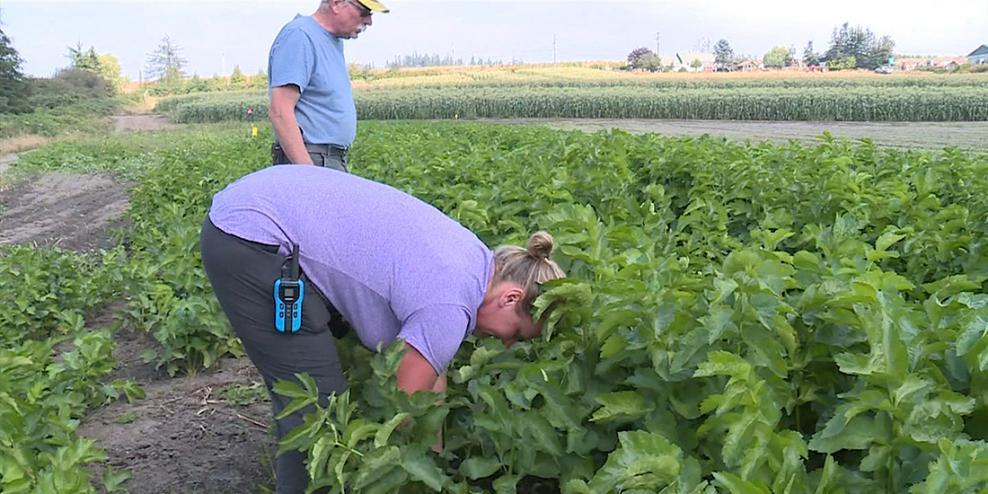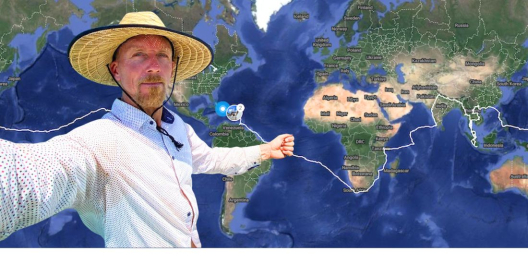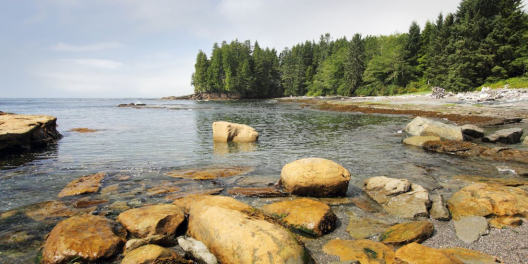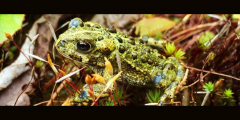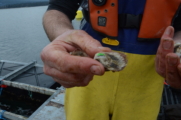Sieffert Farms in Comox left 30 acres of potato fields unplanted because of a cold, wet spring. Then the farm faced another challenge—drought. When the heat finally came, it came on strong. Crops grew quickly, the harvest season was compressed, and water conservation became a big concern.
“Plantings that should have lasted a month and a half we were harvesting within a three-week span,” Alysha Sieffert told CHEK News in a recent report. “It’s been a struggle this year to try and make sure we don’t waste any water and make sure the water we do have lasts through the summer.”
At the same time, pink salmon are holding near the mouth of Morrison Creek because there’s not enough water to swim upstream. If it doesn’t rain soon, those pinks will die before they can spawn.
“They’re on borrowed time,” says Jim Palmer of the Morrison Creek Streamkeepers.
Seals are turning river mouths into buffets.
BC Hydro has reduced water flowing out of the Comox Dam. That means there isn’t enough water flowing down the Puntledge to protect salmon that in that stream, either. It’s either enough water for salmon or enough water for us to drink.
It will come as no surprise to anyone that we’re in the middle of a major drought.
Who doesn’t love a sunny late summer and early fall? But the forests, fields, and streams are way too dry.
East and west VanIsle are currently at Drought Level 4. The province ranks droughts from 0 (average to wetter than average) to 5 (exceptionally dry). Level 4 means “extremely dry and adverse impacts to socio-economic or ecosystem values are likely.”
Everyone is feeling the heat. That includes farmers like the Siefferts, biologists watching salmon die at the river mouth, and homeowners who rely on well water.
Then there are the mounting impacts of heat and drought stress on biodiversity, fish, and forest health.
The numbers tell the story. Comox averages 110 mm, or 4 inches of rain in the month of September. This year, we got less than 3 mm.
Tofino got 52 mm of rain this past September. They usually get three times that amount.
In late summer, Tofino is full of tourists. Demand for water is high. But that’s also when droughts are most serious. And droughts are happening more often, even in Tofino’s rainforest setting.
That’s why in August, the District of Tofino started Stage 2 restrictions. That means no outdoor watering, and no washing vehicles, boats, kayaks, surfboards, and wetsuits. Oh, and leave the hot tubs and pools empty.
In 2006, the taps in Tofino ran dry. It forced the community to truck in water as an emergency measure to top up a reservoir that was on the verge of empty.
Could this be the new normal?
But then, what is normal these days? Last September, some parts of east Vancouver Island got way more rain than average.
Welcome to Global Weirding, everyone. There’s no such thing as normal anymore.

